In the 2021 Winter Term, Ariella Minden, PhD Candidate, will be teaching FAH380H1-S Special Topics: The Art and Architecture of Healing: The Material Culture of Pre-Modern Medicine. We asked Ariella to tell us a bit about herself.
What is your background in art history?
During my undergrad I studied art history at the Universities of St. Andrews and Toronto. Initially, I thought I would study history and international relations, but then on a whim I took an art history course and nine years later I’m still here! It was a Baroque survey at St. Andrews. The narratives of rivalry and passion that the lecturers were able to weave together through objects was so enthralling. The drama of the Baroque had me hooked!
I then transferred to U of T where I took courses with Profs. Anderson, Bear, Cohen, Kavaler, and Periti. Each of whom imparted upon me valuable lessons in the field from writing skills to critical thinking to ways of looking at objects and their broader contexts and networks. Particularly memorable was the summer course that I took with Prof. Anderson in Siena. It was my first time ever in Italy and rather than having conventional assignments we had to keep a sketchbook for the duration of the course. There is no better way to study a building that to sit in front of it and draw it, noticing detail by detail how it comes together. It was during these five weeks that I saw Giulio Romano’s Palazzo Te, which is the monument that convinced me to study Italian Renaissance art.
After completing my BA, I did my masters in Italian Renaissance Art and Literature at the Courtauld Institute in London. There I had the opportunity to discover the vast collections of the city and spending lots of time in prints and drawings study rooms.
Once I finished my MA, I moved to Jerusalem where I was a curatorial intern in the Department of Design and Architecture at the Israel Museum. I assisted with two exhibitions and had an incredible experience collaborating with talented curators, learning so much about what it takes to communicate with a range of audiences.
Toronto, once again pulled me back, and in 2017 I started my PhD on Bolognese printmaking. The following year, I moved to Florence as a doctoral fellow at the Kunsthistorisches Institut in Florenz-Max-Planck-Institut, where I am currently based. Here, I have benefitted immensely from a generous community of historians of art and science at all stages of their careers. Most recently, I had the pleasure of co-organizing a conference on failure.
What are your areas of specialization, and what drew you to those areas?
I work on printmaking in Bologna from approximately 1500 to 1530. I write about how rapid technological change coupled with new and evolving modes of empirical and manual investigation in artisanal spaces (from the workshop to the dissection table) led to greater experimentation in printmaking techniques to serve new markets and meet specific intellectual demands. I use works of art to think about expertise, virtuosity, and failure as critical categories in the histories of art, science, and technology.
It was really the objects themselves that led me to think about art making through this critical framework: first in looking at early medical woodcuts to think about how they propose to present the study of the human body, and then in etching technique where the variability of output led me to question how artists harnessed failure in their processes of making.

What are your (current) favourite works of art, even if you’ve never seen them in person? Why?
Palazzo Te forever holds a special place in my heart. I love its playfulness and how painting, sculpture, and architecture work together to create a witty and scintillating iconographic program. However, my favourite work of art is Parmigianino’s self-portrait in the Kunsthistorisches Museum in Vienna. There is something that is just so compelling about it. Perhaps it is Parmigianino’s exacting stare or maybe it is the way in which one engages with the small convex panel. There is something that has the ability to make me want to stare at it for hours.
Tell us about your upcoming course.
My course comes out of my own research into the relationship between art and science in pre-modern Italy. Each week we will be taking a deep dive into a single theme that pertains to the history of medicine through the lens of art history and material culture. We will be examining manuscripts, prints, maiolica, buildings, surgical saws, wax models, and among other media to explore topics such as women’s health, medical education and practice, public health, and plague.


